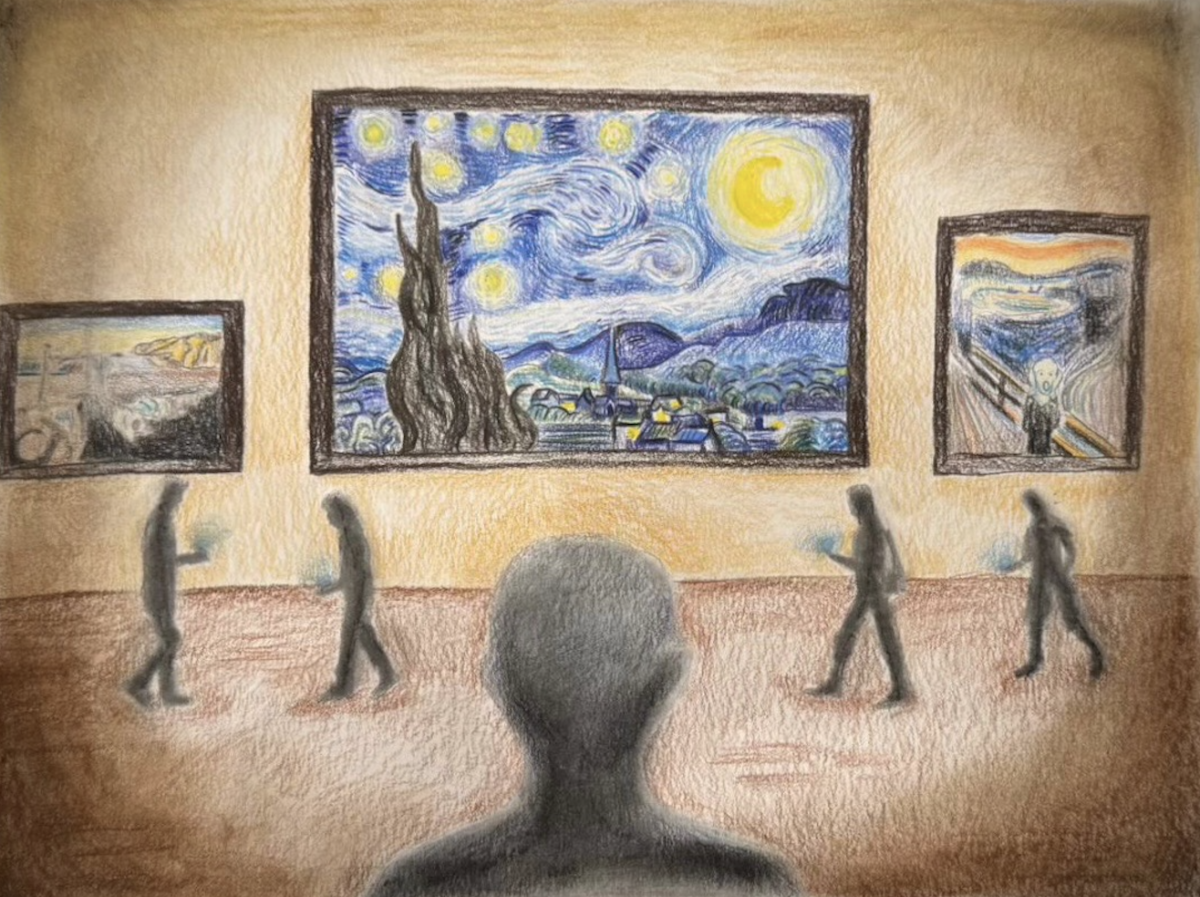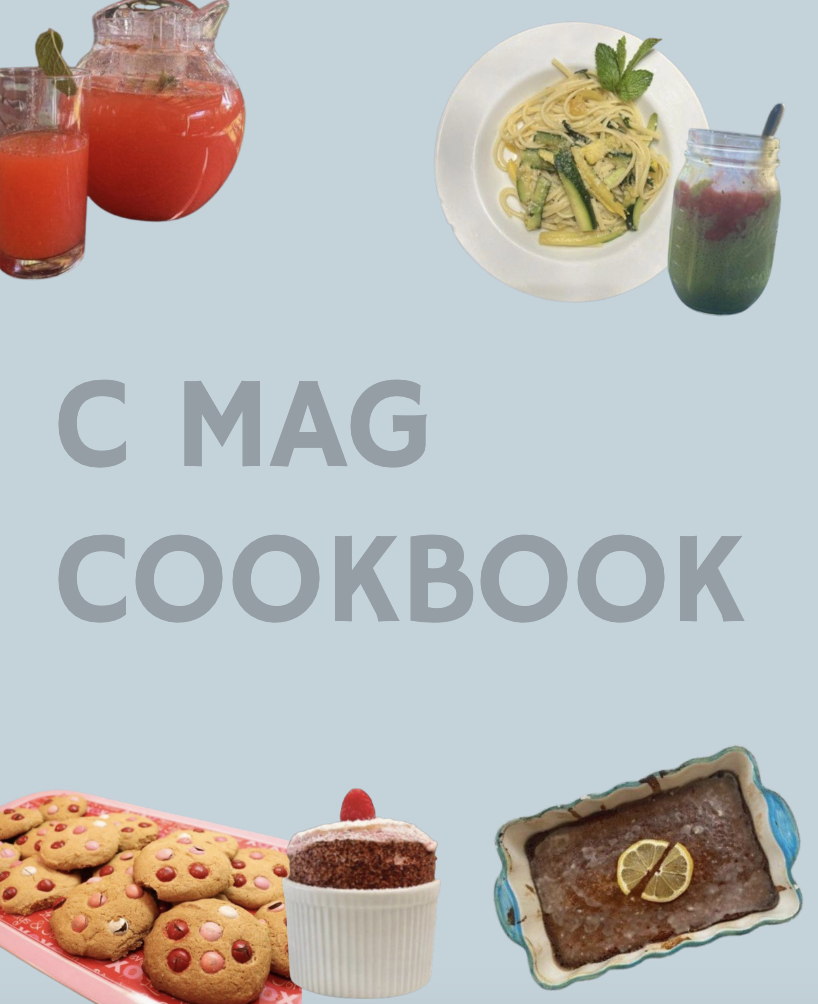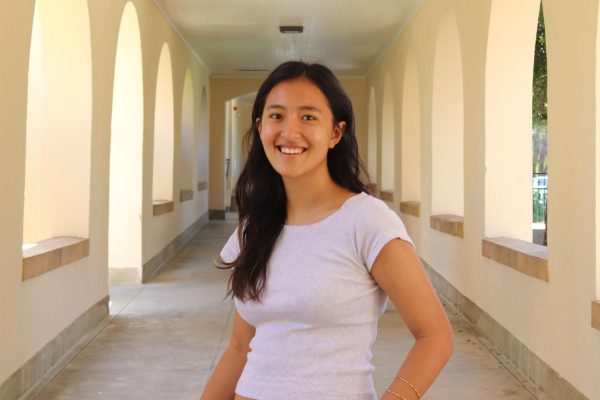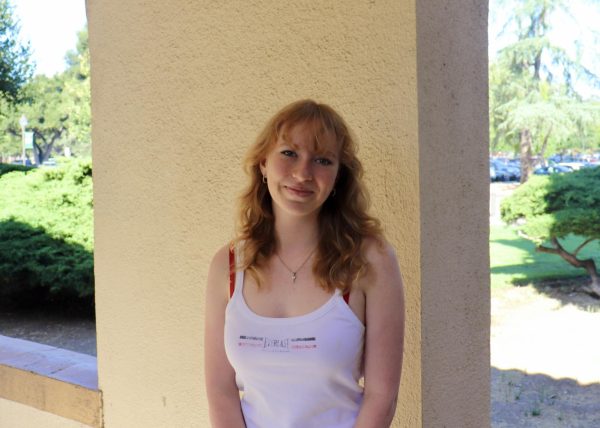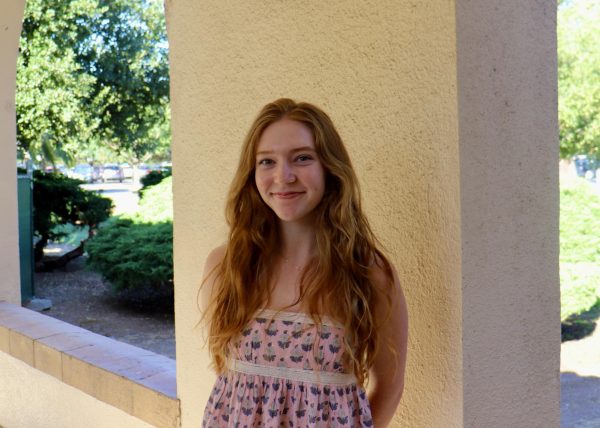Watch our Video Collection Here
At 6:30 p.m. on a Saturday, guitar strings reverberate through an usually empty hallway. Drumsticks striking metal toms and the beeping of a video disturbs the subdued room
Lead vocalist of Marshall The Band and Paly sophomore Simone Batra sings Joy Again’s “Looking Out for You,” one of the group’s favorites.
“[Live music is] so raw, and you get to look at the artists and see their emotion,” Batra said. “Whereas in recording, there are layers. Even a good singer can use a lot of autotune.”
Paly sophomore Milo Johnson, the drummer for Marshall The Band, elaborates on the recent increase in the accessibility of recorded performances.
Over the course of a month, C Magazine cataloged, developed, and filmed a video collection of live performances from student artists based at Palo Alto High School.
With a few songs from each band, the acoustics of the tall ceilings and the focus of the camera, the short clips come to life to show how live music can reach new audiences once boosted online.
As one of the first participants, Marshall The Band’s live sound is able to echo through the hallway near the Tower building and simultaneously reach new audiences online.
Secret Room, a second Paly band interviewed by C Magazine details their prior experiences with live and studio music. Vocalist Gavin Sun emphasizes the role of an artist’s individual preference on production medium.
“Studio music is more technically exact if you’re interested in that, but as an experience, I prefer live music,” Sun said.
Paly senior Shuya Lam, the second vocalist of Secret Room, expands on how live music can be beautiful, but not without occasional flaws.
“Live music is really good, but there are some songs that you can’t hear live,” Lam said. “Some artists don’t perform, or their music sounds better studio recorded—sometimes the live atmosphere can just be bad.”
Paly senior and musician David Tomz, another participant in C Magazine’s collection of live performances, describes his first time performing and singing live. Despite playing music his whole life, Tomz relayed that live music is an experience unique from the rest.
“I didn’t even tell my parents I was going to be performing because I didn’t want to psych myself out,” Tomz said. “But I was met with such a positive reaction that it really shifted my mental framework around performances and putting myself out there.”
The first integration of a music and a video format originated in the 80s with MTV. Tim Riley, a music critic for NPR and Associate Professor of digital journalism, shares his experience growing up through the popularization of music videos.
“[For] people like Madonna and Michael Jackson, video was their primary [medium],” Riley said.
While videos promote music to new audiences and add a dimension to one’s listening experience, with advancing technology and an extensive virtual library of contrived music videos in the 21st century, many people find themselves searching for a new medium.
“COVID gave us a lot of things; we needed a lot of options during [quarantine],” Riley said. “A lot of people started doing desktop concerts, living room concerts or streaming concerts.”
One of the key components in the popularization of recorded music is Tiny Desk, a name synonymous with genre-breaking artists and authenticity. Maia Stern, the lead video producer and director of NPR’s Tiny Desk series shares how Tiny Desk has distinguished itself from other performances.
“It’s very different from going to see your favorite band in concert at a venue,” Stern said. “We are not a live music venue. We’re a legit office with people sitting around at their desks, sometimes annoyed that the music is too loud.”
Kara Frame, a fellow video producer and director for Tiny Desk, shares a similar opinion about how the use of innovative technology sets the series apart.
“Neil Tevault, who was the first audio engineer to work on Tiny Desk, decided that he didn’t want to use the standard omnidirectional microphone — he wanted to use a shotgun microphone, which is what we use out in the field as reporters. It helps us to be very directional with what we’re picking up in the field,” Frame said. “At NPR, everything’s made by all of these talented engineers that have built upon the ones that came before, and that has always made Tiny Desk stand out.”
When NPR’s team set out to create a live environment that could be shared with the world, some complained about the lack of traditional in-ear monitors and post-processing. Still, others were grateful for the testament to unfiltered music.
As artists put more emphasis on diversifying the instrumentals and tools used in music, the level of post-production and mixing has become an increasingly controversial subject within the community of music critics and performers.
“I’m not a person who’s going to say on my scorecard [an artist’s music] rates ‘x’ because I feel like her production is overwrought,” Riley said. “She’s the author, and she gets to frame her painting the way she wants that painting framed.”
However, the incredible experience of live music doesn’t always come for free; live music has also become exponentially more expensive and therefore inaccessible for those who cannot afford tickets. Besides streaming music on platforms, this boom in pricing has inspired many people to search for new ways to connect with artists.
“Recently, we’ve seen the major corporatization of the live act,” Riley said. “There’s [music has progressed through] a live stage, then a recording stage, then there’s the video stage and now we need to have a new stage.”
By combining the unique quality of live music with the outreach of recording, a new medium is born that has benefits for both the artists and the fans.
“[Being recorded] adds this special element of mystique or surprise to the music itself,” Stern said. “[People get] to see artists get a little bit uncomfortable or just not on a stage they’re used to.”
To maintain the charm of Tiny Desk and other recorded live music series such as its predecessor ‘MTV Unplugged’ or recorded covers in ‘Like A Version,’ the curation process plays a critical role.
“Tiny Desk is such a happy mixture of lesser-known bands and big names,” Stern said. “It’s a great equalizer — big names come to our space and feel just as nervous as the smaller bands. It’s really humanizing; we’re all in this office space and there’s no hiding.”
Zach Nial, a professional multi-cam live music director and the former director of MTV Unplugged shares his experience directing throughout the pandemic. Recording live music can vary from the traditional concert experience for both fans and performers.
Recording artists in an intimate setting has gained traction in the past few years, especially on social media. An economic aspect also comes with the explosion in independent music recording.
“The bar to entry for production has gotten so low, that smaller productions, such as Tiny Desk [can gain popularity], while people just shooting on their phones have exploded,” Nial said. “The democratization of media caused it to be far less expensive.”
Social media has played a pivotal role in the acoustic and live music industry. Songwriters and bands are able to reach diverse audiences and gain popularity in new ways.
“You have a kid in their bedroom who writes a catchy lick with some good lyrics.” Nial said. “They just put it out, something they shot on their phone, and it strikes a chord. Just like all great music does. All of a sudden, this kid is now reaching 20 million people, or 100 million people. This was not possible until now.”
The evolution of technology and the increased outreach of online platforms have shaped the way music is marketed, recorded, and sold. The music video industry has existed for decades, but the increase in streaming and the switch from physical to digital has unintended repercussions for professional video directors.
“From an institutional perspective, it is a disaster for us. For those of us who have this [as] our income, we feed our families this way. This is bad for us. But for creators, this is a wonderful thing,” Nial said.
The executive producer of Australia triple j’s ‘Like A Version’ series, Jess Hallay, creates a selection of performances set in live studio settings.
“The production itself is very stripped-back, for example there’s no elaborate sets, stage lighting or visual effects.” ” Hallay said. “The performances are captured live and audiences value authenticity.”
Live experiences have become more difficult to attend. Many believe seeing artists in their live performances can be a separate experience altogether to recorded music.
“Live music should be as accessible as possible.” Hallay said. “Sharing live music online allows audiences to enjoy these performances all around the world.”
The digital preservation of music, especially live music, has many benefits, including the ability for artists to reach their audience and change the way a song is perceived.
Live sets can be fulfilling for artists, to see an output of effort they put into practicing and polishing their performances expressed in an audience, whether in person or online.
“For artists, the best experience is hearing things we worked really hard to come together [performing] live.” Batra said. “And that feeling when you finally get everything right and in order is so satisfying.”
Note: This article was originally published May 2024 and updated continuously until May 2025


![Music on [REC]ord](https://cmagazine.org/wp-content/uploads/2024/05/Screenshot-2024-05-20-at-7.12.21 PM-1200x957.png)



